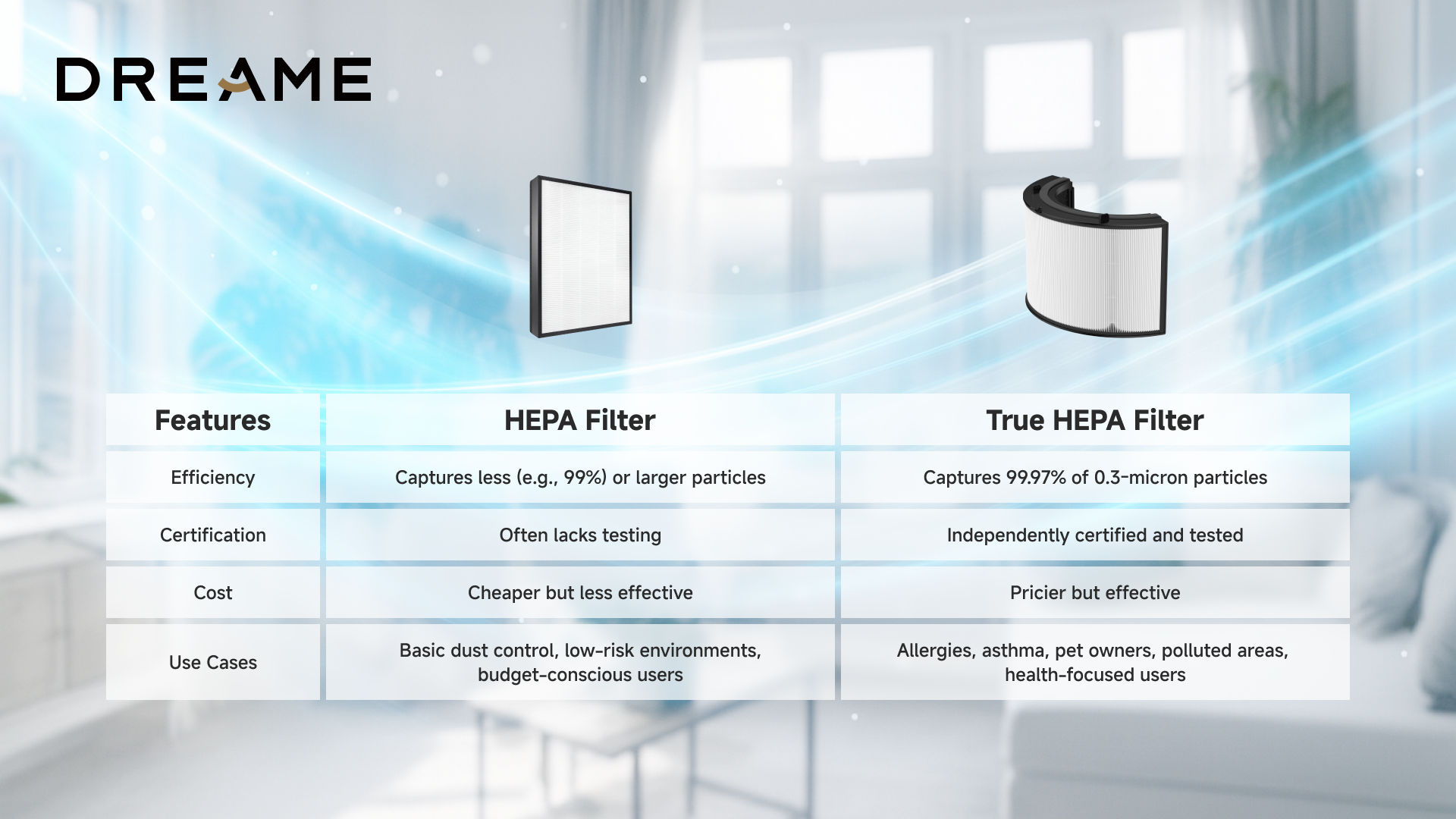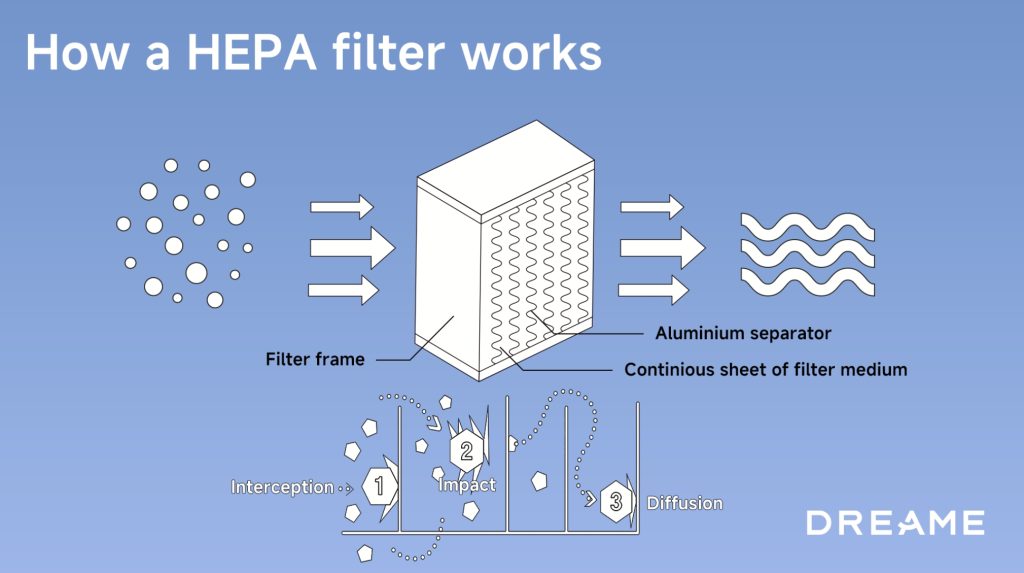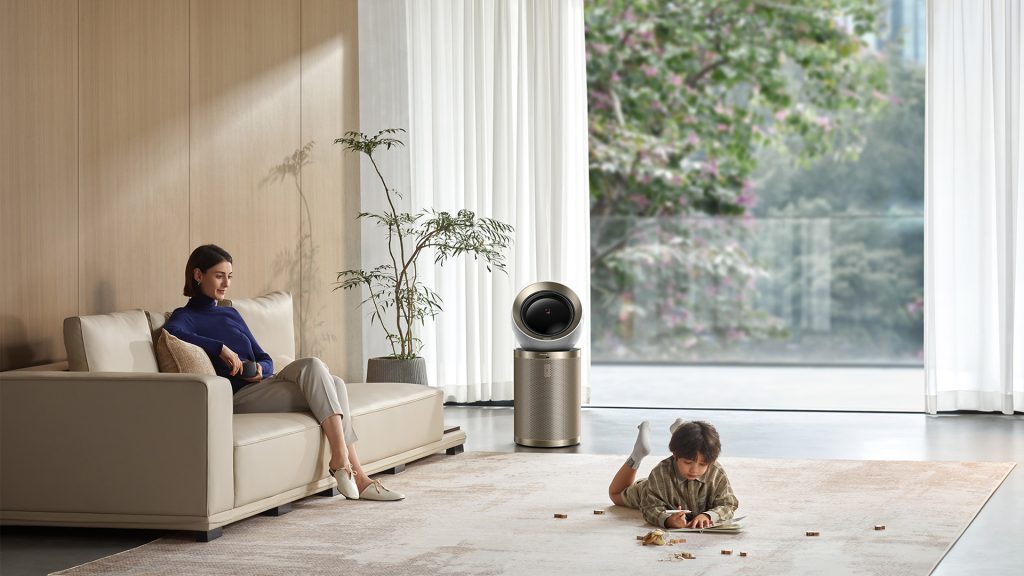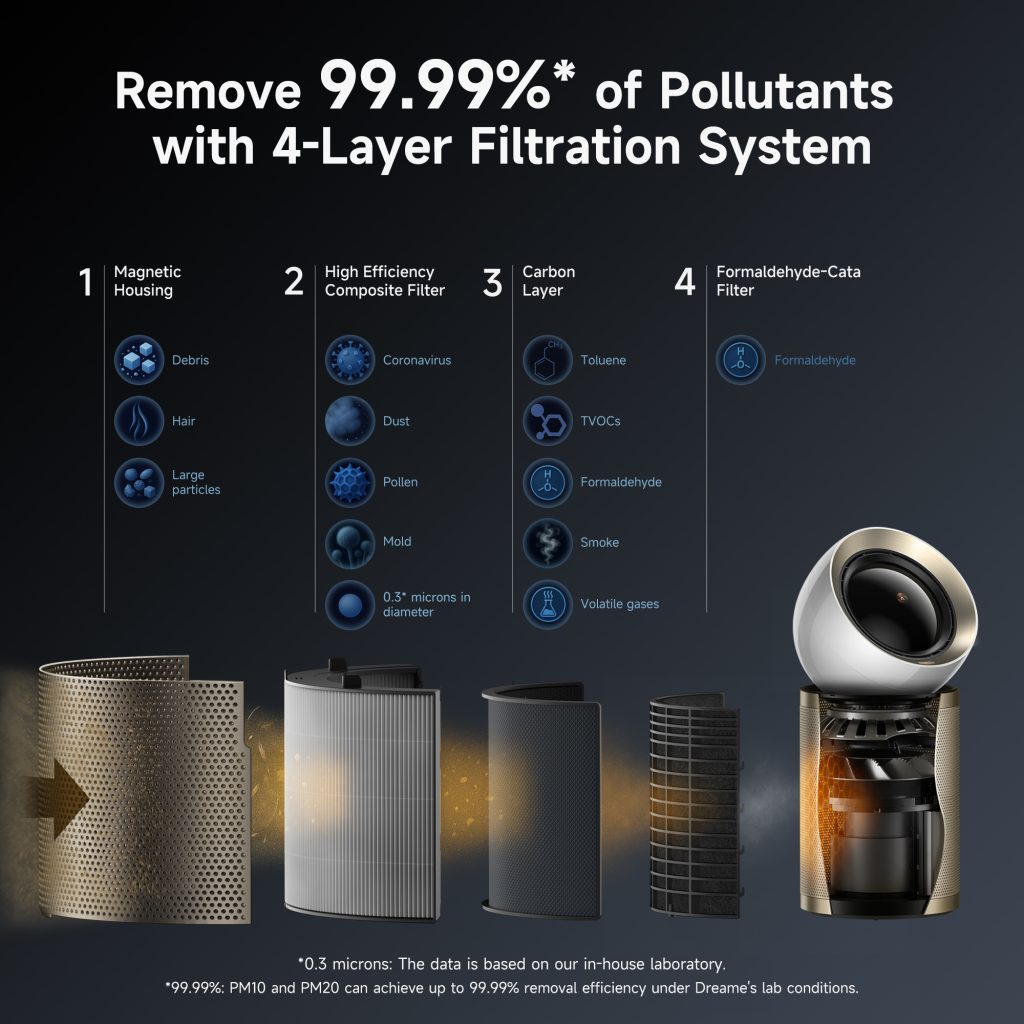
Are you constantly sneezing due to pollen or suffering from allergies at home? You need an air purifier as your indoor air quality may be compromised. However, with so many different types of filters available, it becomes challenging to select the ideal one.
In this blog, we’ll break down HEPA vs. True HEPA filters in detail, helping you choose the best air purifier for your specific needs.
Table of Content
- What Is a HEPA Filter? Understanding the Basics
- What Is a True HEPA Filter? The Gold Standard
- HEPA vs. True HEPA: Key Differences That Solve Your Problems
- How True HEPA Filters Address Your Air Quality Concerns
- Extra Tips on How to Identify the True HEPA
- Conclusion
What Is a HEPA Filter? Understanding the Basics
HEPA stands for High-Efficiency Particulate Air filter. It is designed to capture 99.97% of particles as small as 0.3 micrometers, including dust, pollen, and mold. HEPA filters employ different methods to capture pollutants effectively. These are: interception, impaction, and diffusion.
The HEPA filter is made up of a fiber mesh that captures contaminants. These fibers are arranged randomly, and the air passes through them like a maze. The larger particles, like dust or pollen, are captured by the fibers. This is known as impaction.
As the medium-sized pollutants pass along the fibers, they are entangled in the fibers, a method known as interception. The small particles, like smoke, move through the filter randomly due to the pressure of air molecules. This is known as diffusion.
Note: You may come across “HEPA-type” or “HEPA-style” filters. Keep in mind that they have a lower filtering efficiency, typically 99% or less, and they lack HEPA certification.

What Is a True HEPA Filter? The Gold Standard
The True HEPA filters are the gold standard for air purification, meeting the U.S. Department of Energy (DOE) requirement of capturing 99.97% of airborne particles as small as 0.3 microns in a single pass. These filters undergo strict third-party lab testing to ensure certified performance and are highly effective for people with severe allergies, asthma, or medical conditions.
If you have babies or sensitive individuals at home, investing in a True HEPA air purifier is a smart choice. To identify one, look for labels like “True HEPA” or “H13” and avoid vague terms such as “HEPA-type” or “HEPA-like,” which often lack certified efficiency.

HEPA vs. True HEPA: Key Differences That Solve Your Problems
The primary difference between the HEPA and the True HEPA lies in efficiency. A True HEPA filter is rigorously certified to capture a staggering 99.97% of airborne particles as small as 0.3 microns. This includes common allergens like pollen, pet dander, dust mites, and even some bacteria and viruses.
In contrast, “HEPA-type” or “HEPA-like” filters often fall short, perhaps only capturing 99% or targeting larger particles. This lack of a specific certification means their performance can be inconsistent and may not provide the comprehensive protection you need, especially if you suffer from allergies or asthma.
While True HEPA filters typically cost about $100 every 6-12 months, their superior effectiveness makes them a worthwhile investment for health-focused individuals or those in highly polluted environments. For basic dust control in low-risk settings, a HEPA-type filter might suffice.
However, if your pain point is chronic allergies, respiratory issues, or living in an area with poor air quality, investing in True HEPA is the clear solution for truly clean air.
| Features | HEPA Filter | True HEPA Filter |
| Efficiency | Captures less (e.g., 99%) or larger particles | Captures 99.97% of 0.3-micron particles |
| Certification | Often lacks testing | Independently certified and tested |
| Cost | Cheaper but less effective | Pricier but effective |
| Use Cases | Basic dust control, low-risk environments, budget-conscious users | Allergies, asthma, pet owners, polluted areas, health-focused users |
How True HEPA Filters Address Your Air Quality Concerns
The True HEPA filters are the real deal for users who suffer from allergies or live in environments with poor air quality. These filters are especially effective at easing health issues such as asthma, seasonal allergies, and respiratory irritation caused by pollen, dust, mold spores, or pet dander.
They feature high-grade, lab-tested filtration technology that is certified for allergy prevention, making them ideal for families with children, seniors, or individuals with sensitive respiratory systems.

Some advanced air purifiers, such as those from Dreame, are equipped with True HEPA filters and offer innovative features, including a 4-layer filtration system, real-time air quality detection, and quiet operation. These systems not only remove pollutants but also provide a more comfortable and healthier living environment, ensuring consistently clean and pure air throughout the day.
Extra Tips on How to Identify the True HEPA
Here are some practical tips to identify the True HEPA air purifiers:
- Always verify “True HEPA” or “H13” labeling for certified performance. Avoid vague terms such as “HEPA-type” or “HEPA-like”, as they don’t meet True HEPA standards.
- Check filter replacement costs and frequency. Ideally, you should replace True HEPA filters every 6-12 months, depending on use and performance.
- Check the product specs to ensure it captures 99.97% of particles as small as 0.3 microns.
- Consider replacement costs and availability before purchasing.
- Read customer reviews to verify real-world performance and satisfaction.
- Choose reputable brands that clearly outline testing and certification standards.
Conclusion
The True HEPA filters are the clear winners in the debate between HEPA and True HEPA filters. They are more effective in alleviating allergies, asthma, and serious air quality concerns, offering 99.97% filtering efficiency. You should consider an air purifier with a True HEPA filter to protect your health and that of your loved ones. It’s a smart investment you can make for your health.
Explore top-tier True HEPA purifiers, such as the Dreame AirPursue PM20, to find the perfect fit for your home’s air quality needs.